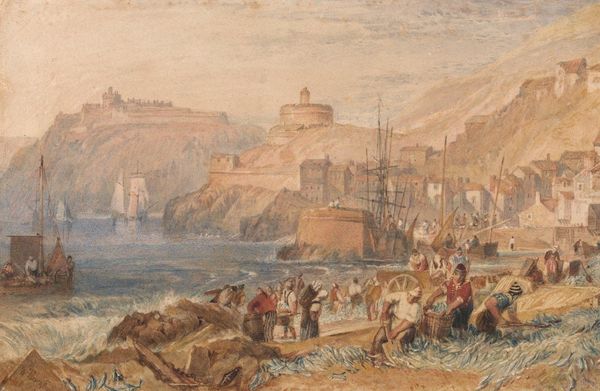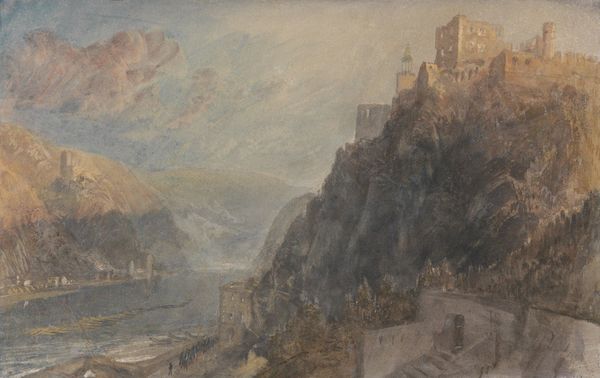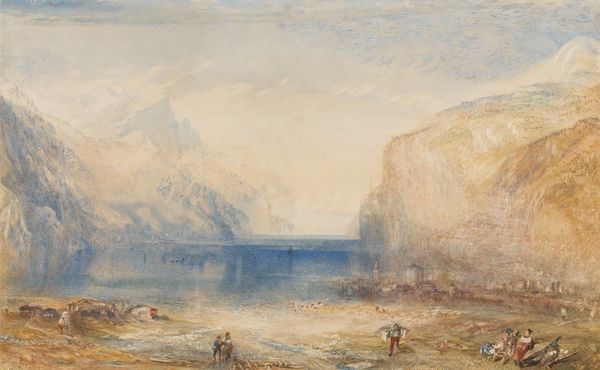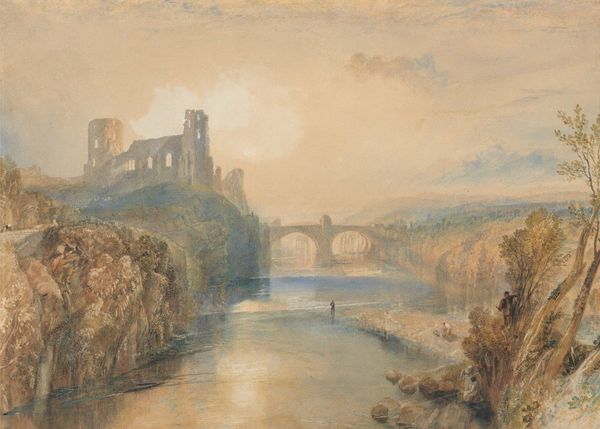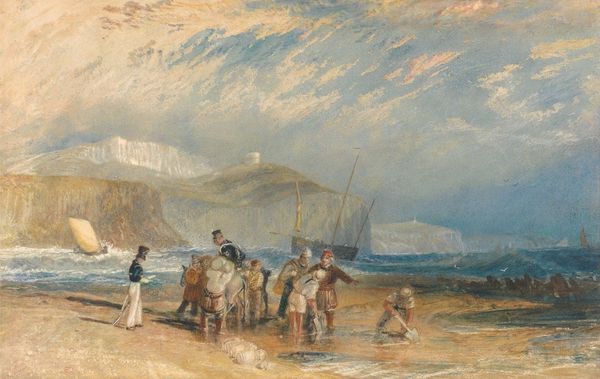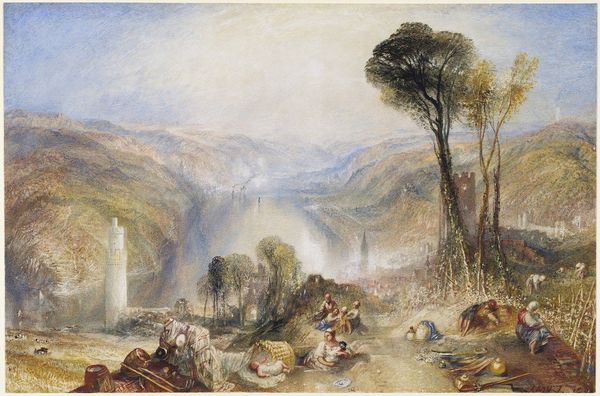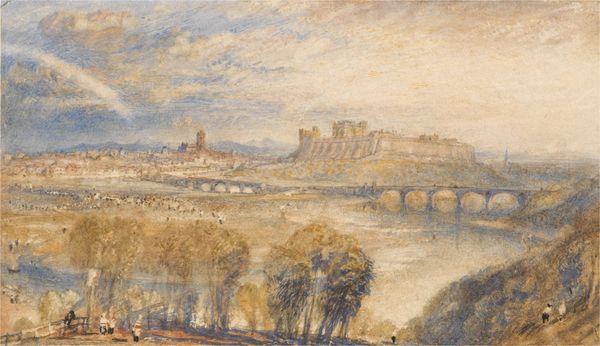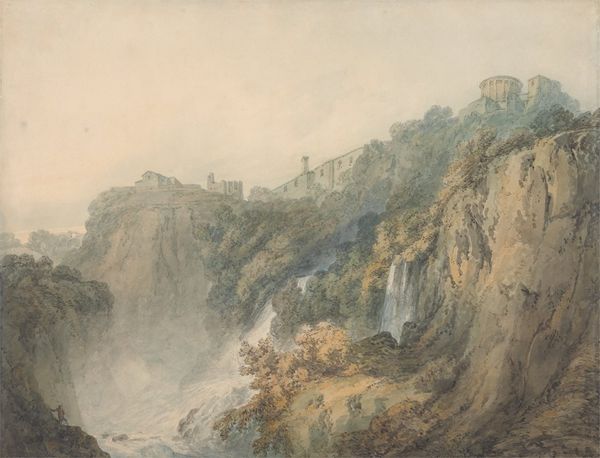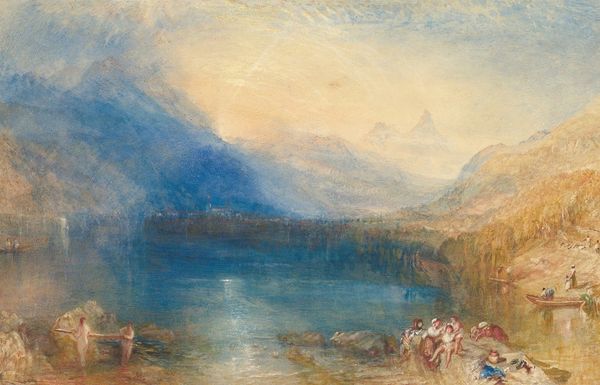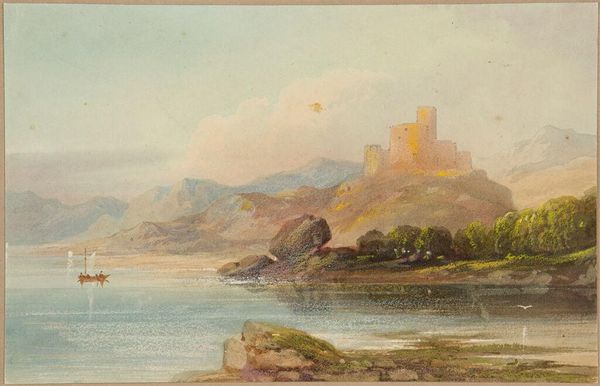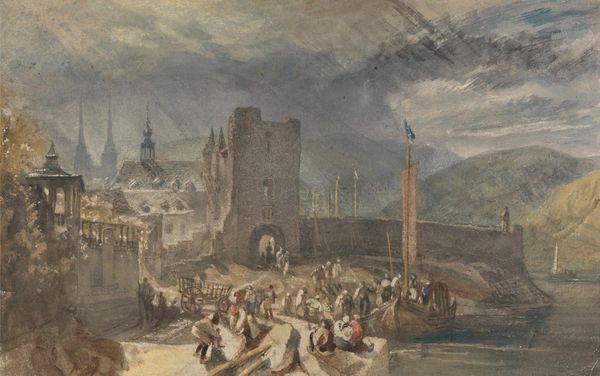
painting, oil-paint, watercolor
#
painting
#
oil-paint
#
landscape
#
impressionist landscape
#
figuration
#
oil painting
#
watercolor
#
romanticism
#
cityscape
#
genre-painting
#
watercolor
#
realism
Copyright: Public Domain: Artvee
Curator: This is Turner's "Heidelberg, with a Rainbow." It’s executed in watercolor and oil paint and captures the German city with its iconic bridge and castle. Editor: It's lovely. There's a hazy, almost dreamlike quality to it. It feels like memory made visible. Curator: I'm struck by the ways Turner manipulates light and shadow to express themes of change. It is the early 19th century and urbanization and industrialization are transforming landscapes, societies, and traditional ways of life, no? The rainbow becomes not just a meteorological event, but a visual metaphor, right? Editor: Absolutely. And consider rainbows, what do they represent, really? Covenant, hope, but also transition and ephemerality. Turner links that universal symbol to Heidelberg, creating a specific sense of place through shared visual language. Even the figures are presented, consciously rendered, as familiar types: mother, tradesman, child. The city is animated in his artistic interpretation of social performance. Curator: Right, there's a tension there. It’s important, in my opinion, to account for Turner's representation of landscape alongside his positionality as an upper-class, white, English artist whose art was deeply intertwined with social hierarchies. It pushes the viewer to reflect not just on their immediate experience, but their connection to larger structures of domination in British Imperialism and Western hegemony more generally. Editor: The way the city sits under the fortress evokes those ideas as well, that the structure's meaning as defensive may extend metaphorically toward how the natural, even metaphysical order imposes power relations through what it protects. Curator: Indeed, and it's here that my interest is most sparked; to question, what cultural mythologies are truly at work within these visual signifiers of settlement and industry. Editor: Seeing Turner play with established imagery allows me to understand its ability to evolve, to absorb personal and societal anxieties. The painting presents us an understanding of his time and reminds me about symbols being constantly renegotiated over time, isn't it? Curator: An act of both historical reckoning, and creative revisioning, simultaneously.
Comments
No comments
Be the first to comment and join the conversation on the ultimate creative platform.
